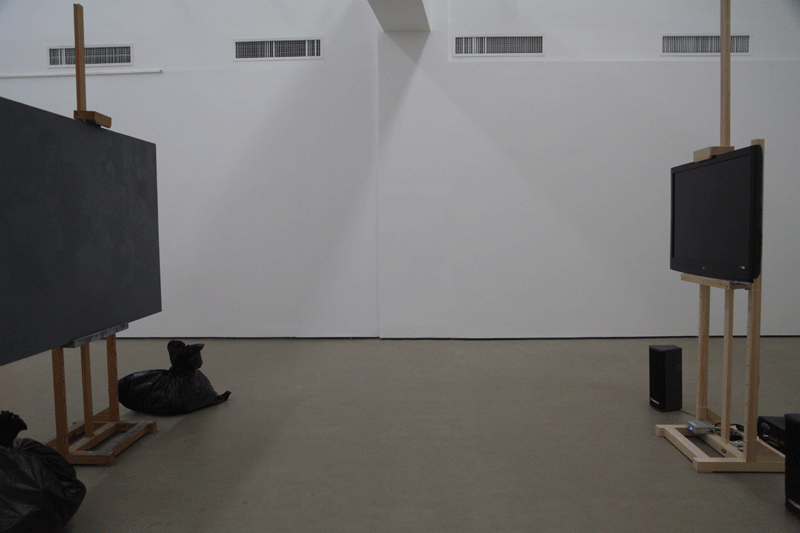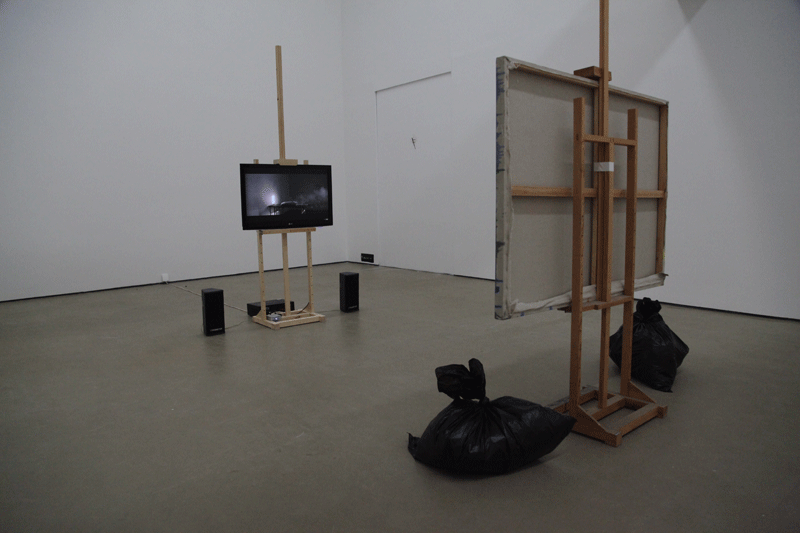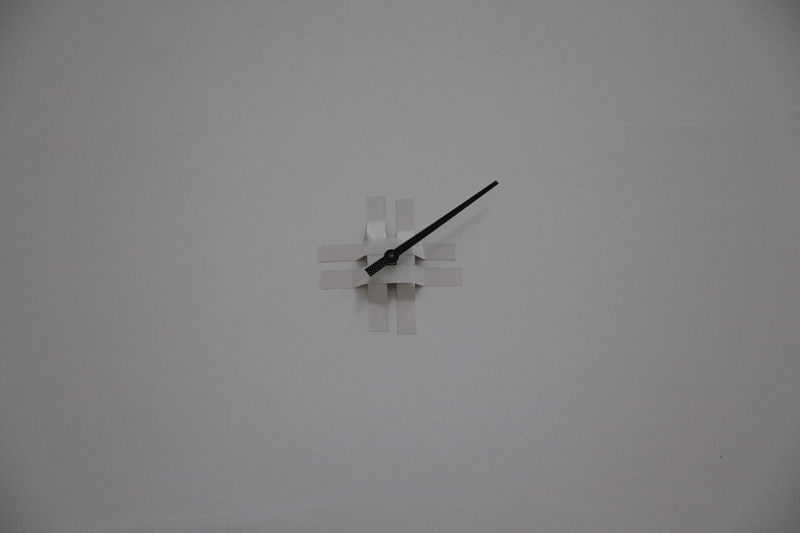《不适之时》 2012
自述: 一张布面油画,一层看起来”没有意义“ 的灰色油彩覆盖了里面一层画,“覆盖”是不是对上次痕迹的“取消”?宣布“作废”?比方说,街头一张宣传画,后来被涂刷掉了,我们看到很多文革时候的标语,现在被水泥或别的涂料涂刷覆盖了,我们或多或少能看到一点点以前的痕迹。 意图涂抹、覆盖、作废,并不能抹消“过去的时间”,反而凸显和重塑了“过去的时间”。 多重时间。 “作废”。作——“成为”——废。而这种“废”在新的语境中有再次成为“用”的可能。它有成为艺术的可能。 就如它脚下的装满了工作室的垃圾的垃圾袋一样,在美术馆中。它有被看做“雕塑”的可能。这并不是无例可循。在这里,“有例可循”作为惯例,本身也是可以使用的现成品。 2分钟的录像,一个小时才播放一次。那58分钟的黑屏时间将是什么呢?观众来到美术馆,东张西望,急切地想要看到“艺术品”,在一个要追赶时间,时间就是财富就是权力的时代,58分钟的黑屏时间可能会被视为“垃圾”时间,我们已经不耐于等待,资本主义不相信等待,它打造了这么一个世界,等待就等于是落后,就等于是毁灭。它把我们抛入紧张之中快速之中,并内化了我们的主观,把时间分为“有用”和“无用”。资本主义对时间的当代化就是,现在微博上转发有一个美国的辣评节目,主持人笑话中国的富士康的时间观是一天35个小时。我们已经比资本主义更资本主义。这种时间观也结构了展览的模式,让观众快速地“获得作品”和“体验艺术”。一种莫名其妙的“高效率”原则。 我也并非仅仅为了反抗这个体制而故意使录像放映间隔这么长时间。2分钟一次的爆炸影像的循环播放所造成的只会是越来越麻木的感受,这并不是我想要的。 另外,这里产生的58分钟黑屏的所谓“垃圾时间”,也是一个黑色的雕塑。 那一根针是分针,当它走到一圈的同一个位置,它也是录像的一个循环时间,这就是定时“爆炸”的时间。 2012/10/23 蒋志
It is an oil painting on canvas. The painting is covered by a layer of seemingly “meaningless” grey oil paints. Can such “coverage” be deemed as some kind of “cancellation” of previous traces? Is it a declaration of annulment? Take the propaganda posters on street for example. Many of those and slogans during the Cultural Revolution were erased later by cement or other kinds of paints. Now we can only perceive some vague traces of them. Intentional erasure, coverage and annulment cannot wipe out the “past time”. On the contrary, such actions highlight and reshape the “past time”. Time is a concept in multiple senses. In a sense, annulment means to make something become “waste”. Nevertheless, in a new context, such “waste” is imbued with possibilities to become “useful” again. It has the potential to become art. If put in an art museum, the trash bag filled with waste from the studio can be reckoned as “sculpture”. It happened before. The fact that it happened before per se can also be referred as ready-made. A two-minute video will be played every one hour. What will happen to the 58 minutes that nothing is shown on the screen? Visitors come to the art museum, eager to look for “artwork”. In an era that believes in time is money, the 58 minutes of blank screen will probably be seen as “trash time”. People are too busy and impatient to wait. Capitalism doesn’t believe in waiting. The world it carves out is convinced that waiting means falling behind and devastation. It throws all of us into a kind of hectic tension, internalizes our subjectivity, and divides time into “usefulness” and “uselessness”. On Weibo, a Chinese version of twitter, an American talk show programme is widely shared, in which the host made joke about Foxconn’s outlook of time. In Foxconn, it was 35 hours a day. In a sense, we become even more capitalist than capitalist societies. Such an outlook of time deconstructs the pattern of exhibition making, enabling visitors to “access work” and to “experience art” in a prompt manner. Such an focus on “high efficiency” is hard to be explained.


